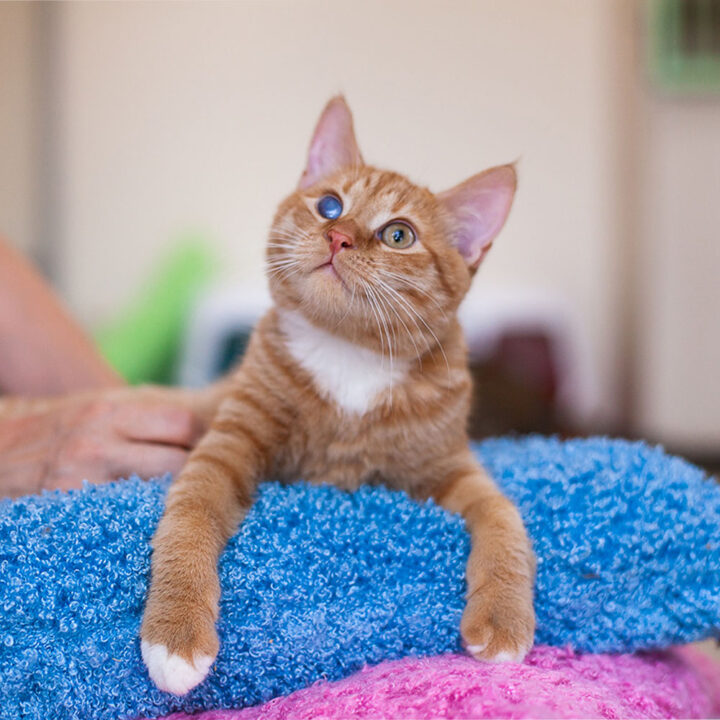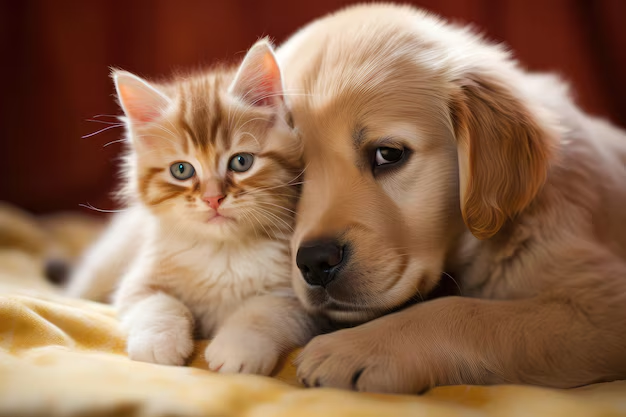Interactive Pet Toy Benefits: Play, learn, and grow
Playtime is more than fun for pets — it’s an essential part of their physical and mental development. Just like children, dogs and cats learn through interaction and stimulation. In this comprehensive Interactive Pet Toy Benefits guide, we’ll explore why play is vital, how interactive toys improve behavior, and what types of toys best support your pet’s health and happiness.
If you’ve ever seen your cat chase a feather toy or your dog puzzle over a treat dispenser, you’ve witnessed the power of engagement. These moments do more than entertain — they shape intelligence, confidence, and emotional stability.
Why Play Is Essential for Pets
Play is instinctive. It fulfills a pet’s natural needs for hunting, chasing, chewing, and problem-solving. Without proper stimulation, animals can develop anxiety, frustration, or destructive habits.
Regular playtime helps with:
- Physical health: Strengthens muscles, joints, and coordination.
- Mental stimulation: Challenges the brain and keeps pets alert.
- Bonding: Strengthens the relationship between pet and owner.
- Stress reduction: Releases energy and reduces tension or boredom.
Interactive play is especially crucial for indoor pets that don’t get enough outdoor activity. It becomes their main outlet for curiosity and energy.
What Are Interactive Pet Toys?
Interactive toys are designed to engage your pet mentally and physically. Unlike static toys, they encourage participation — the pet must think, move, or respond.
They come in many forms, such as:
- Treat-dispensing puzzles
- Electronic motion toys
- Tug-of-war ropes
- Smart sensor-activated toys
- Hide-and-seek tunnels
- Laser or feather toys for cats
Every toy has a purpose: challenge, reward, or physical engagement. On Interactive Pet Toy Benefits, you’ll find examples suitable for all ages and breeds.
Cognitive Development: Building Pet Intelligence
Interactive toys stimulate your pet’s problem-solving abilities. When a dog figures out how to release treats from a puzzle or a cat learns to track a moving object, they exercise memory, focus, and logic.
Mental stimulation prevents cognitive decline, particularly in older pets. Just like humans, animals need “brain workouts” to stay sharp.
Experts suggest rotating toys weekly to introduce novelty — this keeps learning continuous and prevents boredom.
Behavioral Benefits
Many behavioral problems stem from boredom or excess energy. Chewing furniture, barking excessively, scratching, or digging can all indicate a lack of engagement.
Interactive play redirects that energy into positive actions. Puzzle toys occupy attention, chew toys satisfy oral instincts, and fetch games teach discipline and recall.
Consistency is key — even 15–30 minutes of daily play can dramatically reduce destructive behavior.
Emotional and Social Growth
Toys don’t just entertain — they nurture emotional stability. Through play, pets build confidence, reduce anxiety, and develop trust.
- Confidence: Solving puzzles boosts self-esteem, especially in shy or rescued animals.
- Trust: Joint play strengthens the bond between you and your pet.
- Relaxation: After active play, pets rest better and feel calmer.
For multi-pet homes, interactive toys encourage cooperation and reduce jealousy or aggression by promoting shared fun.
Physical Fitness and Coordination
Interactive play keeps pets fit, agile, and strong. Toys that involve running, fetching, or jumping improve endurance and coordination.
For dogs, tug toys enhance muscle tone and jaw strength. For cats, climbing towers and chase toys maintain flexibility and balance.
Daily exercise prevents obesity, improves heart health, and keeps joints mobile — critical for long-term vitality.
Different Types of Interactive Toys
1. Puzzle Feeders
These toys make pets “work” for their food, stimulating natural hunting instincts. Great for mental activity and slowing down fast eaters.
2. Motion Toys
Battery-powered toys mimic prey behavior, encouraging chasing, pouncing, and alertness. Perfect for indoor cats.
3. Chew Toys
Chewing relieves teething discomfort and keeps teeth clean. Look for durable, non-toxic rubber materials.
4. Tug and Fetch Toys
Ideal for dogs that enjoy physical play with owners. Reinforces obedience and teamwork.
5. Smart Electronic Toys
Modern smart toys adjust movement based on pet interaction. Many include mobile apps for remote control and tracking playtime.
6. Sensory Toys
Toys with different textures, sounds, or scents appeal to multiple senses — especially effective for puppies and kittens.
Each type offers unique developmental benefits. The Interactive Pet Toy Benefits selection includes safe, pet-friendly options tested for durability and engagement.
How Interactive Toys Improve Training
Training doesn’t always mean obedience commands — it can also mean focus, patience, and impulse control.
Toys can teach valuable lessons:
- Reward systems: Treat-release toys reinforce positive behavior.
- Focus improvement: Pets learn persistence and concentration.
- Impulse control: Waiting for a toy’s reward teaches patience.
Combining toys with verbal cues or clicker training enhances learning and enjoyment.
For Puppies and Kittens
Young pets need play for proper development. Interactive toys help them learn boundaries, coordination, and social skills.
Puppies benefit from soft chew toys and tug ropes that relieve teething pain. Kittens thrive on feather wands and small chase balls that mimic prey.
Introducing play early sets a healthy foundation for adulthood — physically active and emotionally stable pets.
For Senior Pets
Older pets may lose interest in vigorous activity, but they still need stimulation. Choose gentle interactive toys — slow puzzle feeders or low-impact rolling toys — to keep their minds active.
Senior dogs and cats benefit from cognitive engagement that delays mental decline and improves mood. Playtime becomes lighter but equally meaningful.
Safety and Material Considerations
Safety is non-negotiable when choosing toys. Avoid small parts that could be swallowed or sharp edges that could cause injury.
Look for:
- Non-toxic, BPA-free materials
- Durable stitching or rubber
- Washable surfaces to maintain hygiene
- Size appropriate to your pet’s breed
Inspect toys regularly for wear and tear. Replace damaged items immediately to avoid accidents.
The Human–Pet Connection Through Play
Interactive play isn’t just beneficial for pets — it’s emotionally fulfilling for owners too. Spending time playing reduces human stress and increases oxytocin levels — the “bonding hormone.”
Shared play creates a rhythm of communication beyond words. It strengthens trust and deepens your relationship in a natural, joyful way.
Environmental Enrichment
Pets thrive in stimulating environments. Boredom can lead to depression or withdrawal, especially in indoor animals.
Interactive toys act as environmental enrichment tools — they turn your living space into a playground of curiosity and movement.
The Interactive Pet Toy Benefits collection includes toys that blend seamlessly with your home décor while providing hours of stimulation.
Rotating Toys for Continuous Interest
No matter how engaging a toy is, pets eventually get used to it. Rotating toys every few days reignites excitement and curiosity.
Store unused toys out of sight, then reintroduce them later. This simple trick keeps playtime fresh and mentally rewarding.
DIY Interactive Toy Ideas
If you enjoy crafting, try making simple toys at home:
- Hide treats inside an old sock and tie it off.
- Cut holes in a cardboard box to create a “snack maze.”
- Roll treats into a towel and let your pet unroll it.
Homemade toys are inexpensive, customizable, and sustainable — just ensure materials are safe and clean.
Balancing Playtime
Interactive play is healthy but should be balanced. Overstimulation can cause restlessness.
For most pets:
- 20–30 minutes of active play per session is ideal.
- Two sessions daily maintain fitness and engagement.
- Always end play with calm praise or a treat to reinforce positive association.
Structure helps pets feel secure and satisfied.
When to Replace Toys
Even quality toys wear down. Replace them if:
- Parts are broken or frayed.
- They lose shape or function.
- Your pet loses interest completely.
Keeping toys in good condition maintains excitement and safety.
Final Thoughts
Play, learn, and grow — the three pillars of a happy pet life. Interactive toys bridge the gap between instinct and comfort, between your pet’s natural curiosity and your love as an owner.
Through the Interactive Pet Toy Benefits approach, you provide not just entertainment but education, exercise, and emotional growth.
So next time you pick up a toy, remember: it’s more than a game — it’s an investment in your pet’s joy, intelligence, and lifelong well-being.



